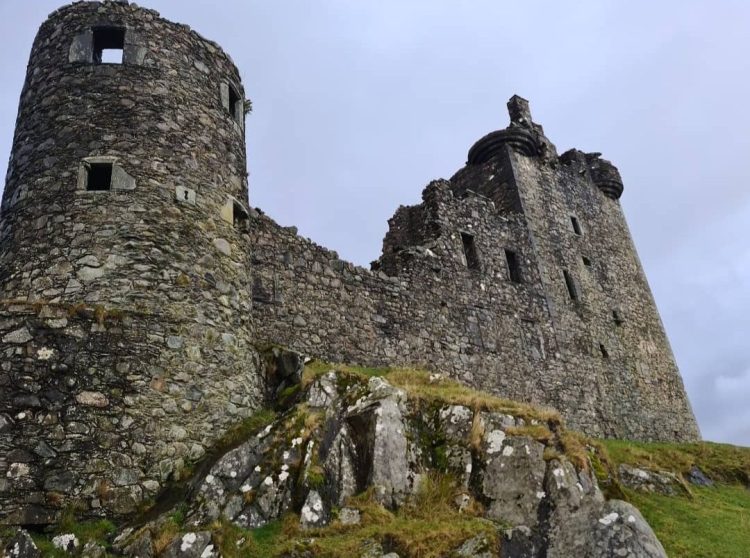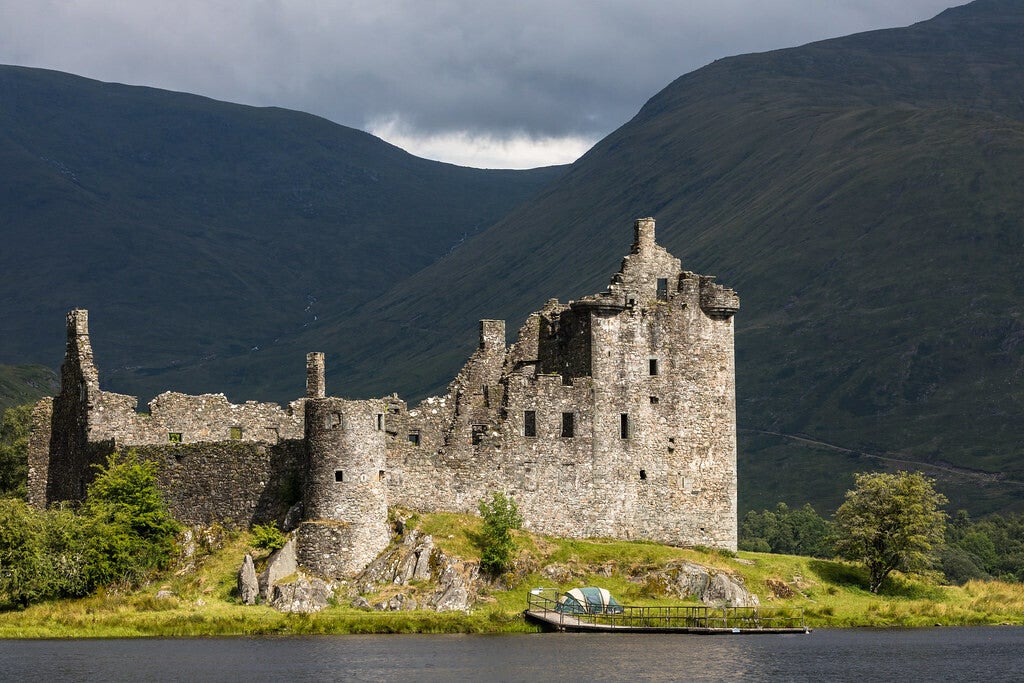Kilchurn Castle, a striking ruin on the banks of Loch Awe in Argyll, Scotland, embodies the spirit and resilience of the Scottish Highlands. Built in the mid-1400s by Sir Colin Campbell, the first Lord of Glenorchy, this imposing structure became the ancestral seat of the influential Campbell clan, shaping the surrounding lands for over 150 years. Today, its weathered walls and towers tell tales of feudal power, strategic importance, and the passage of history.
Table of Contents
ToggleHistorical Foundations and Campbell Legacy
Kilchurn Castle’s history began as a tower house, a relatively modest structure by today’s standards but emblematic of Scottish fortifications of the time. Built to establish dominance over the Glenorchy area, the castle represented the Campbell clan’s growing influence in the Highlands. Over generations, the Campbells expanded the structure, adding a large hall, additional defensive walls, and storage areas, transforming Kilchurn into a center of power that also served as a home for the Glenorchy branch of the family. The castle’s position on Loch Awe, with access to crucial routes through the Highlands, allowed the Campbells to monitor and protect their lands effectively, maintaining both physical security and political authority.

Strategic Importance and Transformation into a Garrison
The castle’s strategic location proved invaluable as political tensions in Scotland escalated in the late 1600s. Following the first Jacobite Rising of 1689, Kilchurn was repurposed as a military garrison, reinforcing its importance in the region’s defense. This conversion included the construction of a substantial barracks, designed to house up to 200 troops—a highly unusual feature for a Highland castle. Kilchurn’s new role as a garrison demonstrated its strategic value in maintaining control over Argyll and securing the Crown’s influence in the Highlands, particularly during the turbulent years of the Jacobite conflicts. This phase marked a shift from a clan seat to a militarized stronghold, illustrating the adaptability of the structure to Scotland’s evolving needs and political landscape.

Abandonment and the Fall into Ruin
By the end of the 18th century, Kilchurn Castle’s importance had waned, and it was ultimately abandoned. A significant lightning strike reportedly damaged the castle severely, further sealing its fate. Without the continuous care of residents, Kilchurn gradually succumbed to the elements, its once formidable walls crumbling and its interior left exposed to Scotland’s rugged weather. Despite this, the castle’s haunting beauty—its towering stonework silhouetted against the dramatic Highland landscape—continued to attract attention, inviting visitors to reflect on its storied past.

Legacy and Enduring Symbolism
Today, Kilchurn Castle stands as a testament to the resilience of the Highland spirit and the lasting legacy of the Campbells. Its silhouette on the shores of Loch Awe has made it one of the most photographed ruins in Scotland, captivating artists, writers, and travelers alike. As a heritage site, Kilchurn provides invaluable insights into the life of Scottish nobility, the Jacobite era, and the defensive strategies employed in Highland fortifications. Through its enduring presence, the castle offers a window into Scotland’s turbulent history, preserving the tales of a bygone era and ensuring the memory of the Highland people’s strength and adaptability lives on.
Kilchurn Castle is more than a ruin; it is a symbol of Scotland’s resilience, the storied lives of the Highland clans, and the enduring power of heritage and history in shaping identity.

